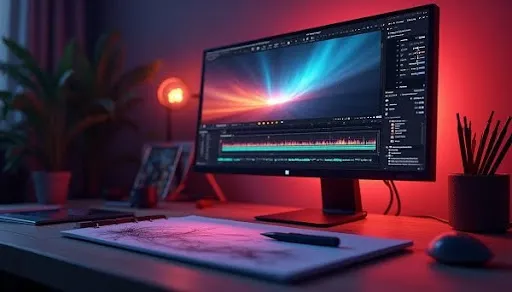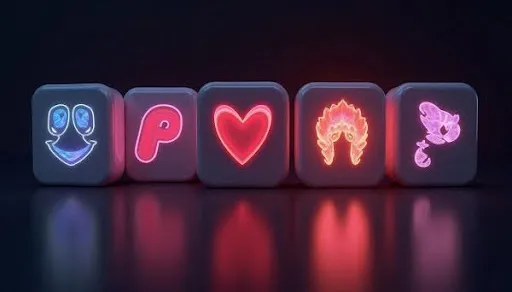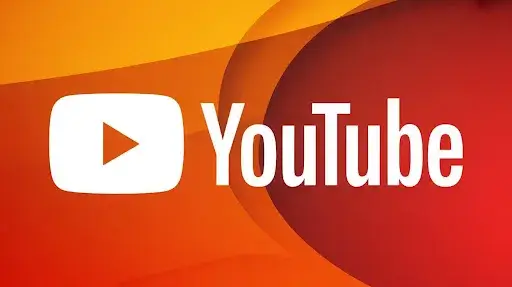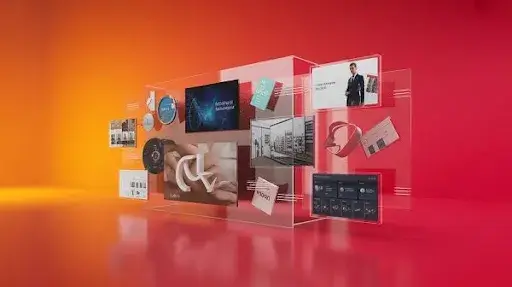Have you ever sat down with a sketch prepared and ideas swirling in your head, only to realize you don’t know which 2D animation software to open first?
We are all in the same boat, after all. Choosing the right tool can either help or hurt the progress of your project. With that, here is an organized overview of some 2D animation software to watch in 2025. The aim is to expedite your decision-making, enhance efficiency, and capture attention with your animation.
The global animation market was valued at USD 394.6 billion in 2022 and is projected to reach USD 528.8 billion by 2030.
Animation studios and solo artists all ask the same thing: Which software gives the most bang for the buck and the brain cells for 2D animation services?
Let’s get straight into the best 2D animation software worth your time this year.
Significance of Credible 2D Animation Software
Animation keeps evolving. But 2D never really left. From traditional 2D animation techniques to slick digital rigs, the right tool shapes how you work.
Studios and freelancers use different 2D animation software for unique reasons. Maybe you’re after hand-drawn charm. Or puppet rigs for a series. Or just need an open-source 2D animation software that won’t gut your wallet.
Good tools:
- Save hours.
- Help you focus on art, not fighting with settings.
- Export clean, smooth files that clients actually want.
In 2025, choices have only grown. So has the confusion. Here’s your fix.
Top 2D Animation Software for 2025
Below are the top 2D animation software picks, the big names, the hidden gems, and what makes each stand out.
-
Adobe Animate
Still going strong, Adobe Animate stays on the list for a reason. Big brands, indie creators, and numerous animation studios in Massachusetts continue to use it for a reason: it works.
Why do people stick with Animate
- Vector-based. Scale anything up without fuzz.
- Bone tools for quick rigging.
- Shape tweens for smooth changes.
- Sound syncing for lip syncs or animated shorts.
- Works well with other Adobe Creative Cloud tools.
- It is the go-to software for game animation services
Watch out for
You’ll need a subscription. And it hogs RAM. But if you already pay for Photoshop or After Effects, Animate fits right in.
-
Toon Boom Harmony
Harmony stays top-tier for shows and feature films. If your dream is to join a team that works on big projects, this is the name to know.
Standout features
- Full support for traditional 2D animation techniques and modern cut-out rigs.
- Advanced rigging for character animation.
- Node-based compositing for layered effects.
- Flexible brush tools and texture painting.
- Multi-plane camera for depth and motion.
Studios worldwide train new hires in Harmony. It’s not cheap, and yes, the learning curve can sting. But if you plan to pitch shows or land studio gigs, few tools prepare you better.
Check out our in-depth Toon Boom Harmony vs. Adobe Animate to have a better understanding of these two software giants.
-
TVPaint
TVPaint feels like flipping real paper, but on your tablet. Artists who love rough pencil lines, smudges, and a raw, handmade vibe swear by it.
Why TVPaint stands out
- Brushes mimic real pencils and paints.
- Onion skinning keeps your motion smooth.
- Light table mode for tracing roughs.
- Clean timeline for big projects.
- No subscription fees, pay once and own it.
Perfect for animators who thrive on frame-by-frame work and dislike being confined to rigid rigs.
-
Moho
Not everyone wants endless frame-by-frame. That’s where Moho shines, strong rigging with an interface that doesn’t fry your brain.
What makes Moho solid
- Smart Bones: smooth character joints.
- Bone constraints for realistic moves.
- Vector drawing is built in.
- Automatic lip-sync tools.
- Physics engine for cloth and hair.
Moho remains a favorite for indie series, YouTube animations, and individuals seeking puppet-style rigs without grappling with massive studio software.
-
Krita
Once known primarily for digital painting, Krita now also serves as a solid open-source 2D animation software. It’s free, community-driven, and surprisingly powerful for hand-drawn work.
Why artists use Krita for animation
- Robust brush engine, so many textures.
- Frame-by-frame timeline.
- Onion skinning is built in.
- Mix raster and vector layers.
- Works on Windows, Mac, and Linux.
- Known for impeccable frame-by-frame animated explainer video services
Software combinations that lack extensive features are ideal for freelancers or students, as they can test their skills without incurring significant expenses upfront.
-
OpenToonz
With the changes Toonz underwent and transformed into OpenToonz, users gained access to a flexible 2D animation software that remains in high demand today. Its widespread use among freelancers and professional studios alike proves it is a valuable and flexible tool for any animator.
Why OpenToonz stays relevant
- Traditional frame-by-frame plus cut-out rigs.
- Ghibli’s scanning system for paper drawings.
- Particle effects and advanced FX stack.
- Open-source, so devs keep adding features.
If you can handle its old-school interface, you get pro-level tools without spending a dime.
-
Synfig Studio
Need puppet rigs but can’t pay Toon Boom prices? Synfig Studio has your back.
Highlights
- Vector animation, scale up forever.
- Bone rigging for characters.
- Layer-based timeline.
- Solid tweening between keyframes.
- Python scripting for custom tweaks.
Synfig works well for explainer videos, web animations, and indie series. It won’t wow your eyes with fancy UI, but it does the job.
-
Pencil2D
Not everyone wants bloat. Sometimes you just want to sketch out ideas fast.
Where Pencil2D fits in
- Easy frame-by-frame timeline.
- Bitmap and vector tools.
- Runs smooth on old machines.
- Onion skinning to line up frames.
- Free, open-source, and updated by fans.
Suitable for beginners testing the waters of different 2D animation software before making a commitment.
-
Clip Studio Paint
Started life as Manga Studio, now a go-to for comic artists who dabble in animation.
Reasons to try Clip Studio Paint
- Strong brush engine for detailed art.
- Frame-by-frame animation timeline.
- Vector layers and 3D models for posing.
- Automatic coloring powered by AI.
- One-time license available, no forced subs.
If you’re an illustrator first and an animator second, Clip Studio Paint feels like a natural fit.
Types of 2D Animation Software
All these names can blur together. So here’s a quick breakdown of the types of 2D animation software you’ll run into:
- Pro-Grade:
- Used by major studios, such as Toon Boom Harmony and TVPaint.
- Packed with features, best for teams and bigger budgets.
- Mid-Tier:
- Clip Studio Paint, Moho, offers a good balance for solo pros or indie studios.
- Beginner-Friendly:
- Pencil2D, Krita, simple, no fluff, easy to learn.
- Free and Open-Source:
- Krita, Synfig Studio, OpenToonz, full-featured, community-driven.
Know where you fit before you spend big.
Best 2D Animation Software Checklist
The ultimate gamble in finding the perfect 2D animation software is a forgettable quest everywhere; look for what you’d like to animate, the specs of your computer, as well as your goals down the road.
Some tools are amazing, but they can be heavy on your hardware. Some are lightweight but lack rigging. Others feel like you need a week to figure out the UI before making your first frame.
Here’s a direct way to align your needs with the right software.
Your Skill Level
For beginners, rest assured that every complex tool has a simple set to help you get started. Pencil2D and Krita are two apps that help you learn to use time frames and layers without being overwhelmed by menus.
For mid- to advanced professionals, Toon Boom Harmony, Moho, TV Paint, and similar products offer high-level features, including advanced rigging and compositing, as well as effects and other creative enhancements.
Project Needs
Are you building a YouTube series with talking characters? You’ll need lip-sync and rigging, so Moho or Harmony will save you headaches.
Are you crafting a short, hand-drawn film? TVPaint, Krita, or Pencil2D will match your traditional 2D animation techniques without forcing you into puppet animation.
Budget and Licensing
- Free and Open-Source 2D Animation Software: Krita, Synfig Studio, OpenToonz, Pencil2D.
- One-Time Payment: TVPaint, Clip Studio Paint.
- Subscription-Based: Adobe Animate, Toon Boom Harmony.
Budget wisely. Spending on the right tool often saves more time and frustration than using a “free” tool that blocks your workflow.
Essential Features in 2D Animation Software
You don’t need every feature, but you need the right ones. When testing different 2D animation software, watch for these:
Drawing and Painting Tools
A good brush engine and responsive drawing tools matter if you do frame-by-frame work. Krita and TVPaint are leaders here. Look for customizable brushes, pressure sensitivity, and layers that keep your art organized.
Timeline and Keyframe Management
Animation lives on a timeline. You should be able to:
- Add, move, and edit frames easily.
- Use onion skinning for reference.
- Work with audio syncing for timing.
Toon Boom Harmony and Adobe Animate handle timelines and keyframes with precision, which is why many animation studios in Massachusetts use them for client projects.
Rigging Tools
For puppet animation, rigging saves hours. Tools like Moho’s Smart Bones or Harmony’s advanced rigging let you reuse character rigs across projects while keeping movements natural.
Effects and Compositing
Want lighting, shadows, or particle effects? Toon Boom Harmony and OpenToonz have built-in compositing. This means you don’t need a separate video editor for layering your animation.
Export Options
Animation is pointless if you can’t deliver it properly. Your software should export in:
- MP4, MOV, or AVI for video.
- PNG sequences for transparent backgrounds.
- GIF for web-friendly animations.
Export control lets you match quality to platform, whether it’s YouTube, Vimeo, or a client’s social media channel.
Comparison: Best 2D Animation Software for 2025
Here’s a clear, quick reference so you can pick fast:
|
Software |
Best For |
Price Model |
| Adobe Animate | Web animations, vector art | Subscription |
| Toon Boom Harmony | Studio projects, TV, film | Subscription |
| TVPaint | Traditional frame-by-frame | One-time payment |
| Moho | Rigged character animation | One-time payment |
| Krita | Digital painting & animation | Free, open-source |
| OpenToonz | Advanced free workflows | Free, open-source |
| Synfig Studio | Vector puppet animation | Free, open-source |
| Pencil2D | Simple, fast sketches | Free, open-source |
| Clip Studio Paint | Comics & short animations | One-time payment |
Bookmark this. It will save you time.
Best Use Cases for Each Type of 2D Animation Software
Adobe Animate
Great for web animations, explainer videos, and interactive animations. Works well if you already use Adobe tools for design or video editing.
Toon Boom Harmony
If you want to produce TV-quality work or join professional pipelines, Harmony is the clear choice. It handles everything from rough sketches to final compositing.
TVPaint
If you love drawing each frame, TVPaint feels like a traditional sketchbook but with endless layers and no paper mess.
Moho
Perfect for animators who want to rig characters and create series efficiently, especially for YouTube or commercial shorts.
Krita
If you already paint digitally, Krita allows you to add animation without disrupting your workflow. Great for short, painterly animations.
OpenToonz
For serious animators seeking advanced tools at no cost. Ideal if you have the patience to learn its workflow.
Synfig Studio
Best for puppet-style vector animation where smooth movements are key.
Pencil2D
For quick tests, animatics, or teaching animation basics to students.
Clip Studio Paint
Excellent if you primarily illustrate and occasionally animate for social media or web.
Tips to Improve Your Animation with Any Software
You can have the best 2D animation software, but skill and workflow matter more. Here are practical ways to improve:
- Keep layers organized by labeling everything clearly.
- Plan animations with storyboards before jumping in.
- Use reference footage to improve movement.
- Keep your file sizes manageable.
- Back up regularly to avoid data loss.
The tool helps, but your practice sharpens the animation.
Common Mistakes to Avoid
- Buying More Than You Need
Avoid purchasing expensive software that you will barely use.
- Ignoring Hardware Requirements
Heavy software on a weak laptop leads to constant crashes.
- Assuming Paid is Always Better
Open-source tools can be as powerful if you learn them.
- Not Considering Your Export Needs
Ensure the tool can deliver the file formats your clients or platforms need.
Biggest Trends to Follow in 2025
For those who want to be proactive, pay attention to these trends with 2D animation software as they reshape the animation process this year.
- AI-assisted features: Some AI tools offer coloring in Clip Studio Paint, and auto-inbetweening is being developed for greater efficiency in frame-by-frame work.
- Cloud collaboration: More applications facilitate cloud collaboration, making it easier for freelancers and studios to exchange documents without the hassle of exporting.
- Hardware integration: Pen tablet peripherals, touch gesture support, and GPU acceleration offer real-time, smooth playback, enhancing the interaction with 2D animation software.
- Hybrid workflows: Animators synthesize hand-drawn elements with model-based animation for greater speed while retaining artistic control.
These trends should elevate your efficiency, but only if the software you choose aligns with your requirements and hardware.
How to Learn 2D Animation Software Faster
You’ve picked your best 2D animation software. Now you need to master it without spending months stuck in tutorials.
Try this approach:
- Focus on basics first: Master drawing tools, timeline, and keyframing before exploring effects and rigging.
- Work on small projects: Short scenes teach timing and flow without burnout.
- Use keyboard shortcuts: They save hours over time.
- Watch targeted tutorials: Find workflow-specific content on YouTube or the software’s community.
- Join online forums: Communities around open-source 2D animation software like Krita or Synfig Studio are active and helpful.
Building skills systematically will give you confidence and speed.
Final Word
It’s not about gathering software, but about determining the singular most impactful tool for 2025. The primary consideration is aligning with the workflow, budgetary constraints, and artistic aspirations.
If you want hand-drawn mastery, TVPaint and Krita will match your style. For rigging and efficiency, Moho and Toon Boom Harmony deliver. Free options like OpenToonz and Synfig Studio prove you don’t need to drain your wallet to animate professionally.
This year, let your software serve your creativity, not slow it down.
Prolific Studio collaborates with creators and labels to develop and animate their ideas, resulting in a polished yet dynamic feel. If you’re exploring software or need experts for your next project, we’re happy to assist.
Check out our 2D animation services and see how we can help you animate stories that capture attention.
Get in touch today and let’s create something unforgettable.
Frequently Asked Questions
What is the best 2D animation software for beginners?
Pencil2D and Krita are safe bets. Both free, lightweight, and beginner-friendly.
Can you animate professionally with free 2D animation software?
Absolutely. OpenToonz and Synfig Studio have pro-level tools. Many studios and freelancers use them.
Which 2D animation software is best for traditional 2D animation techniques?
TVPaint tops this list for a hand-drawn feel. Krita and Pencil2D are great too if you’re on a budget.
Do animation studios in Massachusetts have a preferred software?
Many stick with Toon Boom Harmony for big productions. Adobe Animate and TVPaint also pop up often for commercials and indie projects.
Related Articles










